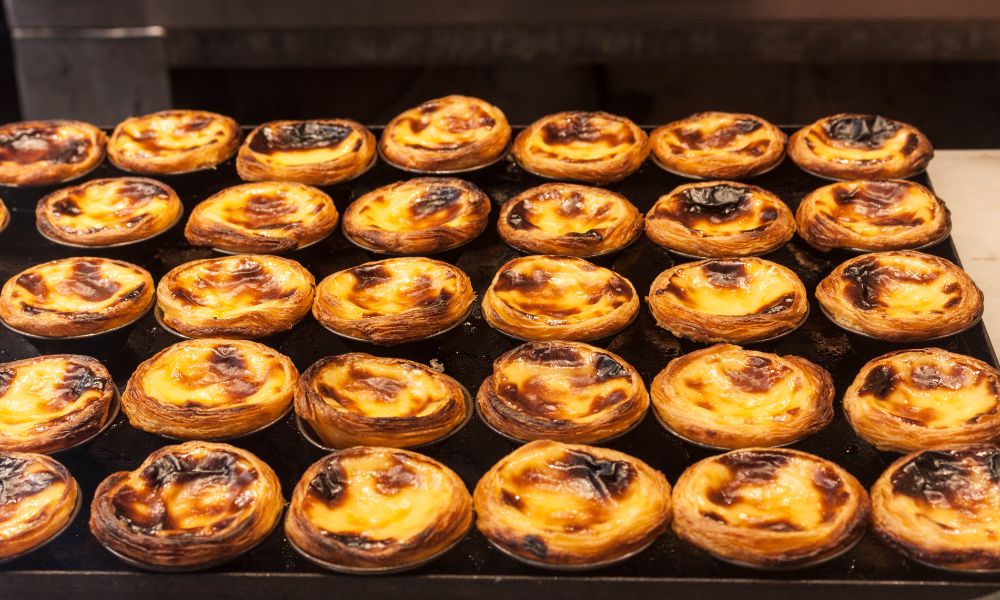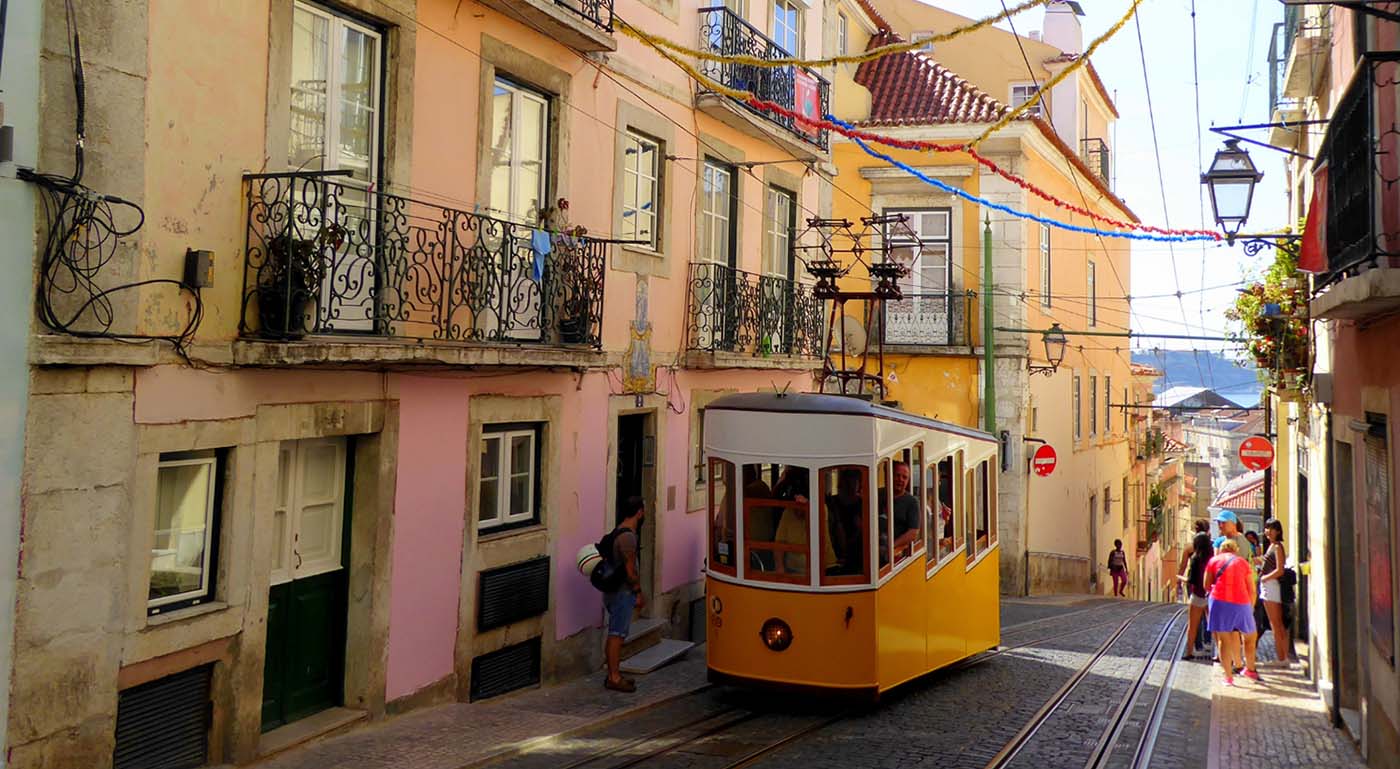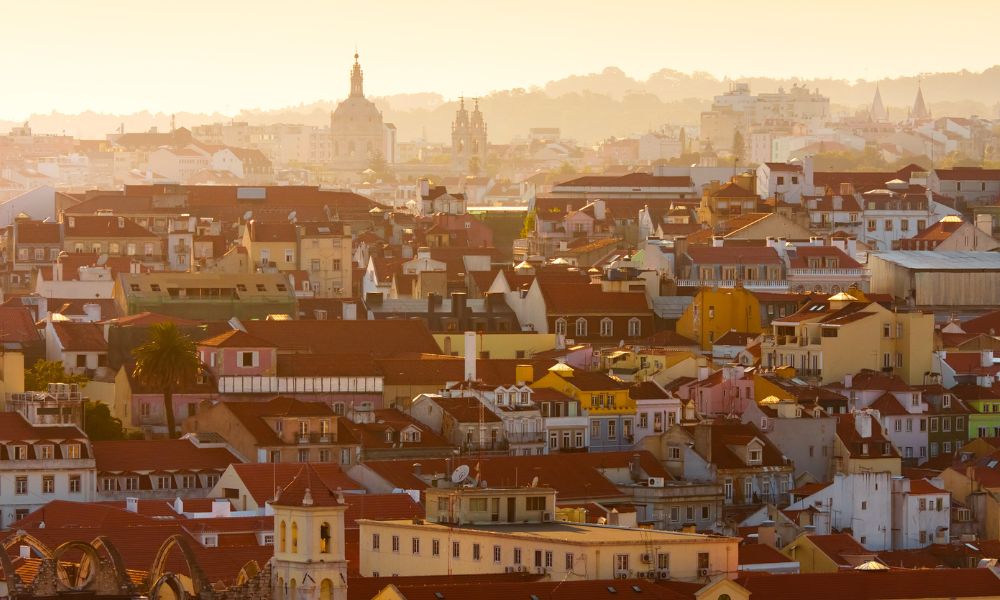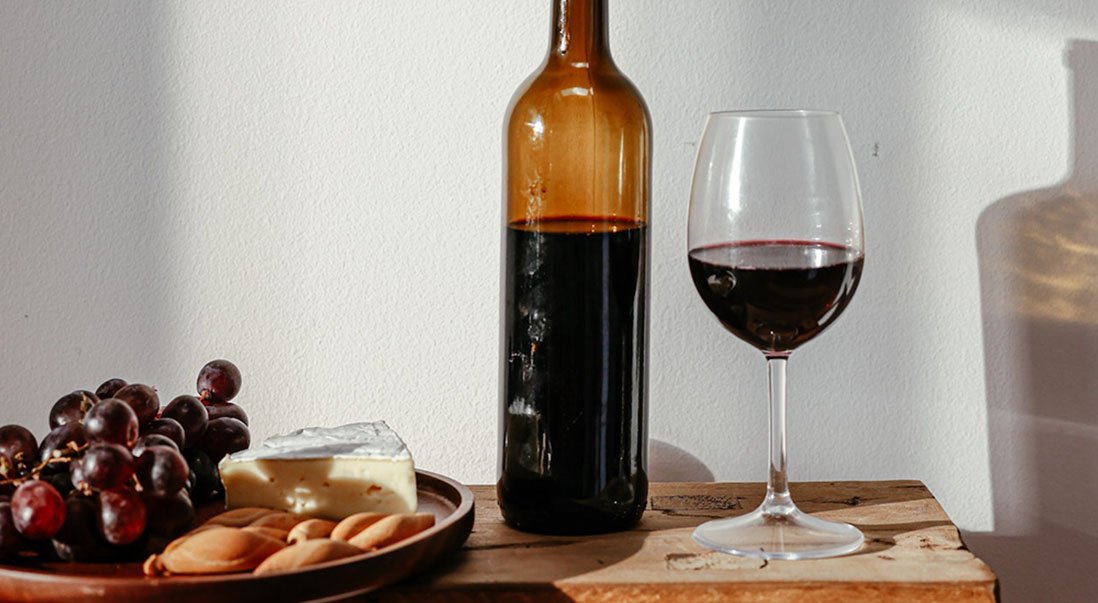Visiting Lisbon? The Best Area to Stay in Lisbon

Picture this: you’re coming to Lisbon, Portugal’s shining capital.
Maybe, you’ve heard of the stunning views, the bright sunlight, colorful buildings, or reflective cobblestone streets illuminating the whole city. Or you’re coming to enjoy this city’s food, culture, and people.
Either way, you’ll need a place to stay, one that’s convenient for YOU. Instead of getting lost in hours of research, let us do the hard work for you. We’ll tell you the best area for you to stay in Lisbon.
🙋♀️ Don’t have time to read the whole article? If this is your first time in Portugal, stay in Baixa-Chiado or Alfama. We recommend staying at Bairro Alto Hotel, Hotel da Baixa or Le Consulat.
The Best Area to Stay in Lisbon
There are several different neighborhoods or freguesias within Lisbon you could stay in. There are 24 officially delineated areas and many more designated by the Lisbon inhabitants.
After all, the city is at least 2700 years old, so there’s been more than enough time to expand and diversify the neighborhoods. Thanks to this, you’ll see signs of different times and influences according to your area.
In the Alfama district, you’ll find medieval Lisbon in the narrow streets, in Avenidas Novas, the 19th-century french city landscape architecture, and in Campo de Ourique, some Art Noveau buildings.
In this ultimate guide, we will explore seven different Lisbon neighborhoods. We will cover: Príncipe Real, Belém, Alfama, Baixa-Chiado, Campo de Ourique, and Avenidas Novas. We will discuss each neighborhood’s cultural attractions, restaurants, hotels, and more.
Ready to learn about the best area to stay in Lisbon, Portugal? Let’s go.
Best Area for a Trendy Experience: Príncipe Real
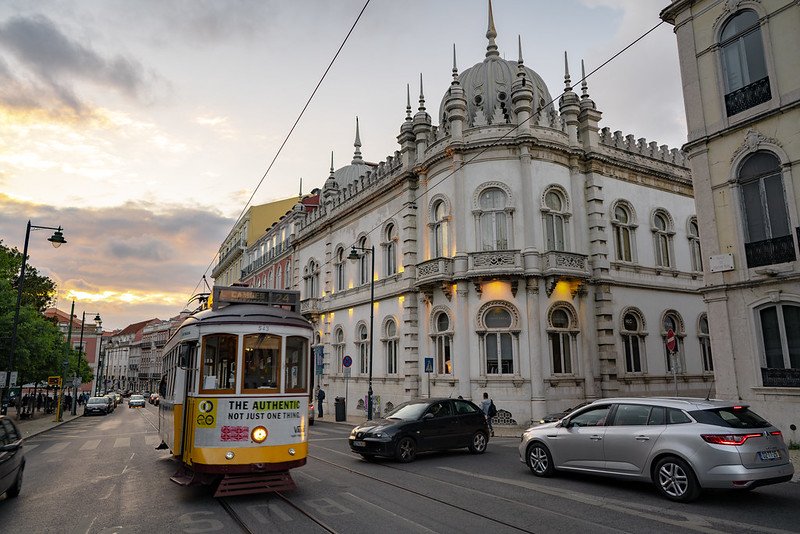
▶ Calm
▶ Beautiful architecture
▶ Good for shopping from local designers
Príncipe Real is a great area to stay in. The garden that is this neighborhood’s namesake was built in the 19th century, and so were the mansions you see around it. It is a partially residential area, meaning it’ll be generally quiet and a little less touristy than most commercial areas like Baixa.
Here you’ll find a wide variety of things to do within walking distance; if you don’t feel like walking back to your hotel, there are multiple metro lines in Baixa-Chiado and another in Avenida, depending on which area you’re staying in. The best thing to do in this neighborhood is to get lost.
The main street of Principe Real, Rua da Escola Politécnica, goes past the Museum of Science and Natural History and the adjacent Botanical garden of Lisbon, which are worth a visit, especially if you come with children.
Along that same street, you’ll find a lot of different spots that are worth visiting.
WHAT TO DO?
If you head east towards São Bento, you’ll find Casa-Museu Amália Rodrigues, the house where the queen of the Portuguese music genre Fado lived.
It is now a museum where you’ll learn her interesting story through her possessions — including her beautiful collection of platform shoes. You’ll meet Chico, her beautiful grey parrot, if you’re lucky.
If you want to listen to some quality Fado, Casa-Museu Amália Rodrigues has sessions in the garden during the summer.
🛍💸 Principe Real is known for its shopping, which includes luxury boutiques and small concept stores.
If you head west, you’ll get to Avenida da Liberdade, the large avenue that hosts Lisbon’s luxury stores like Gucci, Louis Vuitton, Burberry, and Prada, but also Portuguese stores such as the jewelry brand Maria João Bahia.
On the main street of Principe Real, there’s the beautiful Travessa bookshop, with a wide selection of genres and reading nooks, and EmbaiXada, the 20th-century neo-Arab palace turned boutique mall.
Here you’ll find stores by Portuguese designers and artisans, like the menswear clothing and accessories brand A Industria or the womenswear Benedita Formosinho focused on classic design and local materials. There are also restaurants and bars like Casa Cabana and Gin Lovers.
🍽 🫶 After all this walking, you might get hungry!
Check out Atalho Real for great meat, Faz Frio for shareable Portuguese food, and Senhor Uva for a beautiful selection of dishes made with local and seasonal vegetables and a wide collection of natural wines. This is also a good area to find coffee shops for Portuguese-style coffee.
You might want to go for a drink after your meal. If so, check out Red Frog Speakeasy, Pavilhão Chinês for a maximalist old-timey feel, Hot Club Portugal for an iconic jazz club, Cerveteca for a great selection of Portuguese beers, or Insólito for a bar and restaurant with a beautiful view.
If a certain wine or spirit caught your eye during your meal drink, check out Garrafeira Nacional to bring a bottle back with you.
WHERE TO STAY?
👉 Memmo Príncipe Real is a modern boutique hotel or guest house with gorgeous panoramic views and private rooms.
👉 Hotel Alegria, a traditional Portuguese architecture hotel in Praça da Alegria, between Avenida da Liberdade and the central area of Príncipe Real.
Best Place for Families: Belém

▶ A lot of cultural spots, with museums and monuments galore
▶ Closer to the beaches
▶ Calmer but farther from the center
Belém is an area on the outskirts of the actual city of Lisbon. With a high concentration of historic buildings, monuments, and museums, it will keep you and your family occupied for a while. It is also closer to the sea and beaches, a mere train ride away.
While there’s no subway to Belém (the sandy coast makes it harder for an underground area), there are a lot of buses and a train that gets you to the Lisbon city center.

🏆 EDITOR’S PICK: Lisbon: Private Kid-Friendly Belem Tour w/ Tower & Monastery
Discover the wonders of Lisbon’s Belem district on a private walking tour tailored for kids and families.
WHAT TO DO?
When you’re in Belém, we recommend walking along the river and taking in the breeze and blue from the gorgeous Tagus.
🧑🦱👨🦱 This area is great for kids due to the number of entertaining places to visit.
There’s the Planetarium, which offers a wonderful audiovisual experience detailing the rich history of our universe.
Maybe kids would enjoy the National Museum of Archeology, with its large collection of ancient Iberian and Egyptian relics. The large and beautiful Tropical Botanical Garden is worth a visit if you have some energy to burn.
Belém is also known for the Centro Cultural de Belém with its exhibitions, concerts, and beautiful garden with a view over the river. The permanent Berardo collection features a great modern art collection with works by Andy Warhol, Pablo Picasso, Jean-Michel Basquiat, and Paula Rego.
🏢 🏫 There are a number of historical sights to see as well
Belém started as a small village with a port where sailors and fishermen would stay. The population slowly grew, and two iconic buildings were built during the beginning of the 16th century: the Jerónimos Monastery, built to celebrate Vasco da Gama’s successful sea travel to India.

And the Belém tower, a military tower set up in the Tagus River. These buildings have a unique Portuguese architectural style called the Manueline. It’s an adaptation of late gothic—or flamboyant, how fun!—with maritime elements, like cables, reefs, shells, and mermaids. Make sure to pay attention to the details when you visit either building.
Later, when the 1755 earthquake hit Lisbon, the Belém area was barely affected, which led to the beginning of the construction of Palácio da Ajuda.
This palace was built over decades in the 19th century and was not fully finished until 2021, taking a whopping 226 years of construction overall — making it a very Portuguese construction timeline. We’d recommend going up to Ajuda to check out the palace.
🍽 🫶 After all this walking, you might get hungry!
While you’re coming down from Ajuda, you might want to swing by the famous Pastéis de Belém, a place that sells Portuguese custard tarts that are crunchy on the outside and creamy on the inside.
These Pastéis de Nata were initially made by the clergyman of the closeby Monastery, using a recipe that remains a well-kept secret until today. The bakery is a 5-minute walk from the Monastero dos Jerónimos.
If you are still hungry, stop by the seafood restaurant Nunes Real Marisqueira, the Portuguese food Taberna dos Ferreiros or, for a cheap and authentic experience, Tasca do Gordo. On the other end of the fancy food spectrum, there’s the Michelin star Feitoria Restaurante & Wine Bar.
WHERE TO STAY?
👉 Nau Palácio do Governador – A beautiful hotel in the center of historical Belém, in the refurbished old quarters of the Belém Tower Governor, built over an old Roman fish sauce factory. There are vestiges of these Roman ruins throughout the place.
👉 Wine and Books Hotel – A hotel with private balconies, modern rooms, a view over a beautiful church, a restaurant, and a sauna. It is a bit far from the river, though, closer to Ajuda.
👉 Altis Belém Hotel & Spa – This prized hotel is right in front of the river and h as phenomenal reviews. It’s worth staying in just for the restaurant. The hotel offers spacious rooms, a good location, a fitness center, and great value. One of the best hotels if you are looking for a chance to relax.
Best Place to Get a Feel for the City: Alfama
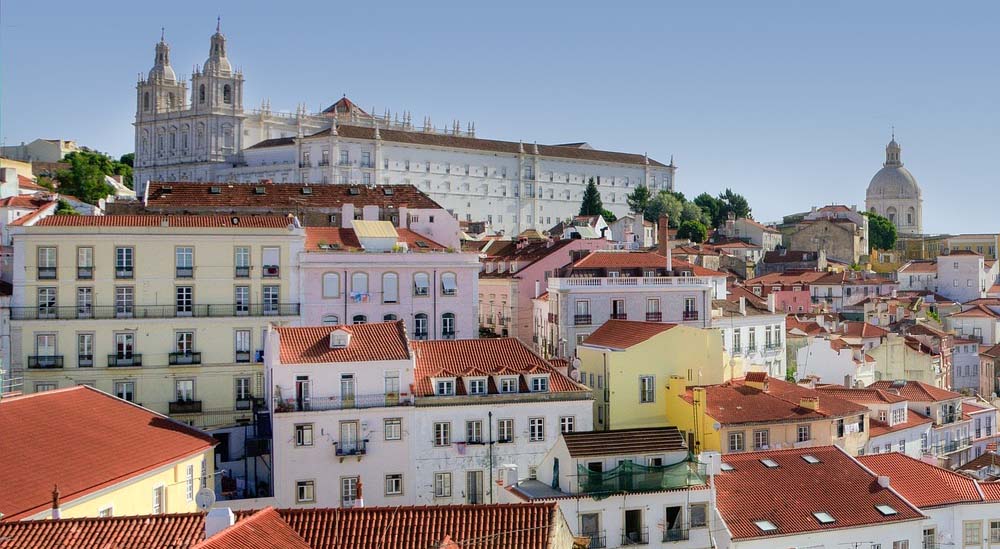
▶ Older medieval part of town
▶ Great place for wandering around
▶ Beautiful viewpoints
Alfama, Lisbon’s oldest district, is often described as “the heart of Lisbon.” It’s a neighborhood that remained intact after the 1755 earthquake, which means it retains some Arabic and medieval characteristics. Small winding streets provide shade throughout the hot days—but are not the best for cars. This is the best location if you want to visit the oldest part of the city.
The closest subway stop to Alfama is the Santa Apolónia one, by the river, which means you’ll have to walk up the hill to get into the actual neighborhood. You can also take the 28 tram to stop close to the area. Alternatively, if you’re looking to get to the castle, you can exit at the Baixa-Chiado subway stop and take the two elevators up to the area — this will cut out a lot of walking.
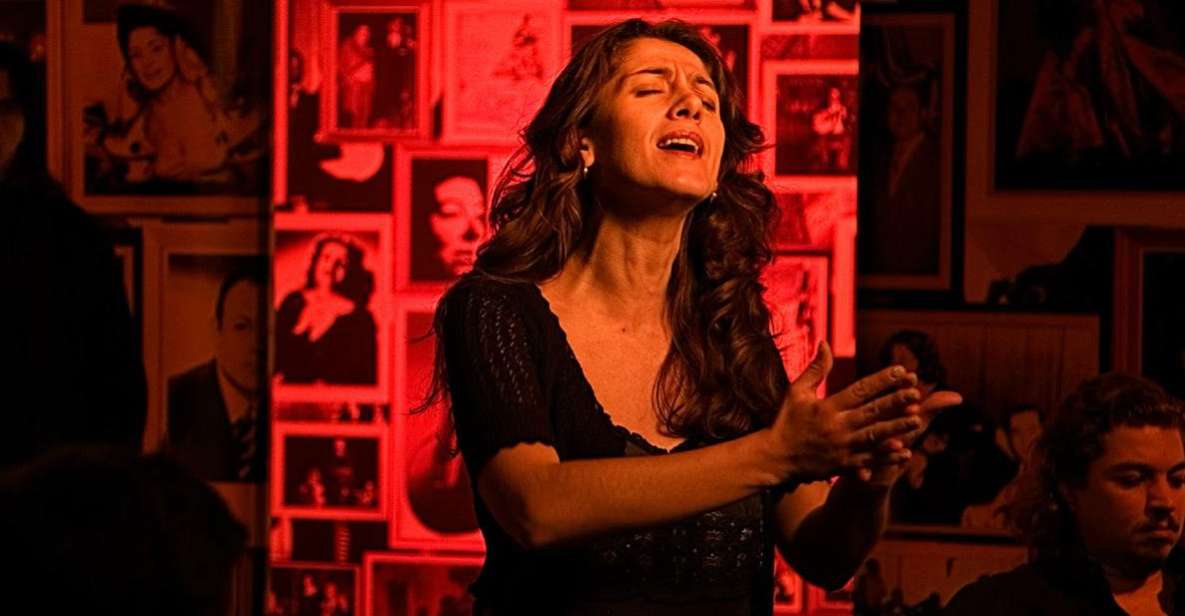
🏆 EDITOR’S PICK: Alfama Tour & Live Fado with Traditional Dinner
Hear traditional Fado music on a walking tour of Lisbon’s Alfama district, where the genre was born.
BOOK THE EXPERIENCE HERE
WHAT TO DO?
With its narrow streets, Alfama is the best neighborhood to stay in Lisbon for walking around and finding the best little nooks. You’ll see pastel-colored buildings, neighbors talking through windows and clothes hung out to dry. It’s a lived-in neighborhood and the best place to stay to understand Lisboa and its people.
🏢 🏫 You’ll find a lot of history within Alfama.
Starting with Castelo de S. Jorge (São Jorge castle), the medieval castle atop the tallest of the 7 hills of Lisbon. During the beginning of Portugal as a country, it was the specific place of residence of the king and its court — you’ll see a statue of the said king inside. The castle has the most beautiful panoramic view of the city atop the tallest hill in Lisbon.
Another building to visit is the Sé de Lisboa, the oldest cathedral in Lisbon, built in the 12th century. It shows an aspect of Portuguese architecture that’s quite interesting. Because of the location of the country, architectural trends often arrive late, so you’ll find some hybrid architecture.

The cathedral, for example, has mostly Romanesque architecture, short and blocky, but with one gothic aspect: the big circular stained glass window.
While walking around between these monuments and thin streets, you’ll find stunning viewpoints like Miradouro das Portas do Sol, Miradouro de Santa Luzia, and Miradouro de Santo Estevão, which are all worth a visit. You’ll never regret taking in the views of this beautiful city.
🛍💸 For shopping, check out Feira da Ladra, a flea market.
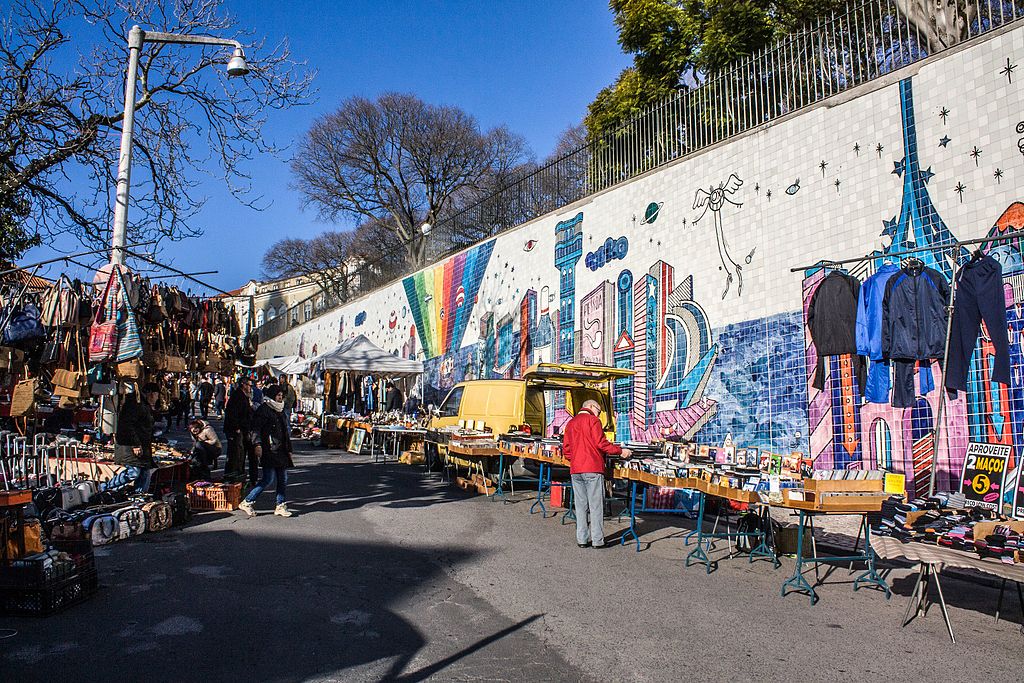
Located on Santa Clara, this street market is open on Tuesdays and Saturdays. People sell antiques, their art, and military garments. You name it. Be wary of people selling Portuguese tiles, as they’re sometimes stolen from houses and buildings. If you’re looking to get some Portuguese tiles, we recommend XVIII – Azulejo & Faiança instead, where the tiles are painted in-store. This is the best part of Lisbon to stay if you are want to go shopping.
🍽 🫶 After all this walking, you might get hungry!
For restaurants, you should go to the tucked-away Páteo 13, the authentic Agulha no Palheiro, or the unique Boi-Cavalo restaurant. You might also want to check out some fado music while you’re in the area: O Corrido, which is family-owned, and A Parreirinha de Alfama are great places for a true experience of the deeply felt music.
🎼🎻 Fado is more than a music genre; it is a feeling. You should listen to or watch a live performance to understand its magic. Read out our article about The Best Fado in Lisbon: 11 Fado Houses to Explore
WHERE TO STAY?
👉 Pátio São Vicente – This is a smaller place (9 rooms), tucked away in the middle of Alfama, with an interior patio and a 13th-century original wall integrated into each room.
👉 Hotel Solar do Castelo – The only hotel inside the medieval quarters of Castelo de S. Jorge, this hotel is full of history. It’s an 18th-century building with medieval artifacts found during renovations.
👉 Hotel Convento do Salvador – This hotel was one of the oldest convents in the city and has a beautiful lounge bar and terrace to watch the sunset.
Best Neighbourhood for first-timers: Baixa-Chiado

▶ Wide, geometric 19th-century streets
▶ Commercial center of the city
▶ Close to the river
Baixa-Chiado, Lisbon’s downtown area, is a central location full of life and wonder. All the main attractions are a short walk from each other.
A metro station connects both the lower Baixa area and the higher Chiado area, leading most people to treat these neighborhoods as one. If you want to stay in Central Lisbon, this is one of the best neighborhoods if this is your first time in Lisbon. As it is a central location, it is in close proximity to quirky shops, art galleries, great views, and some of the best restaurants – in short, many different tourist attractions.
WHAT TO DO?
The Baixa area was almost completely destroyed after the 1755 earthquake, which allowed for a reconstruction of the area according to urban planning in vogue during the Enlightenment period.
You’ll see wide, geometric streets that differ from Alfama’s. Here, the cobblestone streets have contrasting motifs in black and white.
🏢 🏫 You’ll find a lot of history within Baixa-Chiado
Aspects of the older parts of town are still visible, though, especially if you head to Núcleo Arqueológico da Rua dos Correeiros. This underground exhibition explores the different eras the area passed through, through the Roman, medieval, and Pombal eras, by looking at artifacts and house structures.
You can only visit this museum during certain hours with a tour, so we’d recommend booking ahead. Close by. You’ll find Arco da Rua Augusta, a triumphal arch built to celebrate the reconstruction of the city, which is also a viewpoint with spectacular views, open from 10 AM to 7 PM.
Another hard-to-miss structure is the Elevador de Santa Justa (Santa Justa lift). The elevator is open from 7 AM to 10 PM during winter and 7 AM to 11 PM during the summer and it costs 5.15€ to ride up and down. It might look familiar to those who have been to France, as it was built in the same architectural style Eiffel was known for.

The elevator brings you from Baixa to a beautiful viewpoint in Largo do Carmo, where the fantastic Convento do Carmo is located. This convent has no ceiling after it was destroyed during the earthquake.
🛍💸 Baixa is a very popular area & the commercial center of Lisbon
We’ve selected a few stores worth visiting. A Vida Portuguesa sells products made in Portugal, such as ceramic swallows, olive oil soap, or ginjinha liqueur; Vista Alegre is known for its porcelain dishes; Luvaria Ulisses, open since 1925, is a uniquely specific store dedicated to high-quality and beautifully fitted gloves. If you’re looking for clothing, Typographia sells high-quality t-shirts with unique designs, and A Outra Face da Lua is a beautifully curated vintage store. Finally, if you’re interested in natural cosmetics, we’d recommend Benamôr.
🍽 🫶 After all this walking, you might get hungry!
If you want to grab a bite, we’d recommend Pinóquio for seafood or in.Vulgar for interesting seasonal dishes. For a nice brunch, check out Kaffehaus. Finally, for a drink, go to the cocktail bar at 8.68. This region is the best option if you are looking for a good time on a rooftop bar as there are several. Make sure to back out: Silk Club, Topo Chiado and Entretanto Rooftop Bar.
WHERE TO STAY?
👉 The Lisboans – Restored 19th-century canned and preserved goods factory with 15 boutique apartments. This hotel is a family business with a sister restaurant (Prado) and wine bar. You’ll surely have some very interesting neighbors, as demonstrated by the blog section registering past guests. Between the Baixa district and Alfama, but still in a central location.
👉 The Ivens Hotel – This hotel’s name and decoration are an homage to the explorations of Ivens and Capelo. Its decoration is as if you’re in the jungle, and there’s a Jazz bar.
👉 Lisbon Destination Hostel – This is a low-cost good option inside the 19th-century train station of Rossio. This is a fun and incredibly central place to stay at. There are private and shared rooms. The best accommodation if you are on a budget.
Best place for Nightlife: Bairro Alto
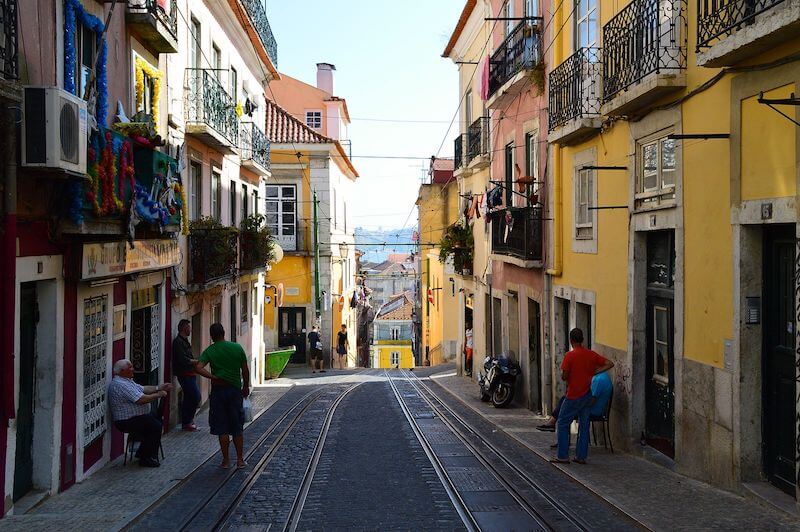
▶ Central location
▶ Great for socializing and drinking
▶ Good for Fado
Bairro Alto has been a popular area for going out since the 19th century due to the growing number of local restaurants and Fado Houses that popped up at the time. It has a distinctly geometric disposition, though it can easily get lost because the streets all look similar.
Although the area was first built to bury the Black Plague victims, over time, it developed into an area that the Portuguese nobility moved into, gradually building into the area we see today. It was the first neighborhood built to accommodate the passage of coaches in the streets.
Since Bairro Alto is on a hill, you can easily access viewpoints with breathtaking views, like Miradouro de S. Pedro de Alcântara or Miradouro de Sta. Catarina.
Recently restored, Miradouro de S. Pedro de Alcântara has two levels and is great for visiting both during the day and after a night out. It’s next to Ascensor da Glória, an elevator tram from Baixa to Bairro Alto. Alternatively, the Baixa-Chiado subway stop is close to Bairro Alto, too, if you leave through the Chiado exit.
WHAT TO DO?
Right in the street of the Miradouro de S. Pedro de Alcântara is Brotéria, a Jesuit cultural center with a lovely café with an outside seating area, an exhibition area, and a bookshop right at the entrance, and an upstairs area with space for lectures. It’s located in a beautiful palace and worth the visit.
Another interesting art space is Galeria Zé dos Bois, with exhibitions for you to see during the day and concerts and other events at night. The top floor has a bar with a beautiful terrace, a mandatory spot for a night out.
🍽 🫶 After all this walking, you might get hungry!
If you want to grab a bite before going out, check out Ternura Boémia for good food and drinks. Légumi is great for vegan sushi, even if you’re not vegan. A Nossa Casa, a small family restaurant, focuses on seafood and meat dishes made for sharing. Finally, Flor da Laranja is one of the best Moroccan restaurants in the city, with a wonderful atmosphere and host.
🥳🍻 Ready to party?
As a well-known going-out area, there are several bars you should go to within Bairro Alto. There’s the jazz club Páginas Tantas, the eclectic Associação Loucos e Sonhadores, and Park with its wonderful views.
Machimbombo has a nice atmosphere with its neon lights and very well-made drinks. Tasca do Chico is a great spot for Fado Vadio, the type of Fado anyone from any background can come and sing. It’s a truly Portuguese experience, though it can get quite packed.
We should let you know how a typical night out in Lisbon goes. It is common to buy a drink somewhere (anywhere) and drink it in the streets, interacting with strangers through the night.
We highly encourage you to do that. During the week, Bairro Alto’s bars are open until 2 AM and close at 3 AM on weekends, making it an ideal first spot to go out. If you’re feeling like partying a bit more, you can easily walk down to Cais do Sodré and go to one of the many clubs on Pink Street.
WHERE TO STAY?
👉 Bairro Alto Hotel – Prized hotel in Praça Camões, in a beautiful yellow and very typical Portuguese building. Located right in Lisbon city center in the Bairro Alto districts.
👉 The Independente Hostel & Suites – Hotel with a great bar and restaurant with a bohemian vibe. There are live performances by local musicians and a guest-only lounge with film screenings and communal dinners. There’s an option for a suite or a communal dorm if you are on a tight budget.
Best place for a Smaller Town Feel: Campo de Ourique
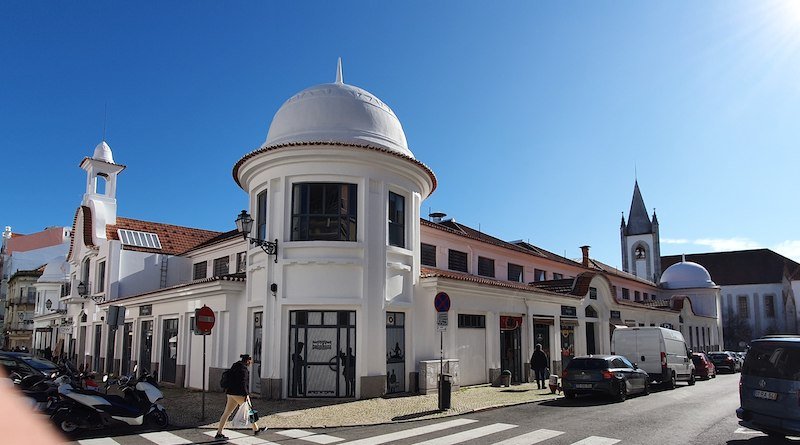
▶ Quieter and calmer than the center
▶ A good balance of trendy and traditional spots to visit
▶ It has a prized Pastel de Nata
Campo de Ourique feels like a town within the city. It is the least touristy neighborhood in central Lisbon; It is also the last stop of trams 25 and 28.
It’s a neighborhood planned around two existing structures: the Prazeres Cemetery (where the infamous 28 tram route starts) and the military headquarters. This neighborhood was part of a city plan to expand to accommodate the growing population around the end of the 19th century.
There is no direct subway to Campo de Ourique, though you have some buses like the 709 and 701 and the 28 tram. Also, be aware that Campo de Ourique is located on one of the steep hills and one of the parts of the city that is a little disconnected from the rest of the city.
However, it is a great location if you are looking to be away from the tourist crowds.
WHAT TO DO?
There are a couple of interesting buildings to note around the area: the patisserie A Tentadora and the stationary shop A Concorrente have art nouveau friezes, and a building in Rua Infantaria 16 was the first ever modernist building in Lisbon.
🏢📍 What to see in Campo de Ourique
We’d recommend you visit Casa Fernando Pessoa, a museum centered around the modernist poet Fernando Pessoa, in his old house. There are three stories that the exhibition spreads throughout, a spot for conferences and a library with books from all over the world.
After, visit Cemitério dos Prazeres, a romantic era cemetery built to accommodate the elite of Lisbon: the aristocrats, established writers, politicians, etc. Its magnific mausoleums are worth the visit, and you’ll learn a bit about some of Portugal’s important figures.
🍽 🫶 After all this walking, you might get hungry!
If you’re looking for a bite, check out one of the restaurants inside the Campo de Ourique Market or O Magano for food from the Portuguese area of Alentejo. Focacceria Pugliese has great focaccia and burrata, and Kreatori Office Bar is a popular place to work with its delicious tapas and drinks. For Italian, make sure to check out Memoria.
We also have to mention Pastelaria Aloma with its prized Pastel de Nata, which is an obligatory stop if you don’t want to wait in line for Pastéis de Belém and still have an amazing pastel de nata.If you are vegan, there is also Vegan Nata.
Since Campo de Ourique is adjacent to Estrela and Lapa, we’d recommend exploring those areas as well, and checking out Jardim da Estrela, Rebel Rebel, the natural wine shop close to Estrela, and Dede’s, the café-restaurant in Lapa.
WHERE TO STAY?
It’s hard to find hotels in Campo de Ourique, so we’d recommend either finding an Airbnb or staying in one of the adjacent areas.
👉 Jardim da Lapa Boutique Hotel – Boutique Hotel in Lapa with an interior patio with a small pool and a nice garden.
👉 Villa Domingues – A cluster of houses with access to a beautiful, typically Portuguese garden. With a hot tub, but cash only. Closer to Rato.
👉 Olissipo Lapa Palace hotel – A luxurious 19th-century palace in Lapa with a view over the river. Large and quiet period-decorated rooms. The hotel also has an indoor pool and an outdoor pool. It is a beautiful historical building with amazing hotel features, including comfortable rooms.
Best Place to be Close to Everything: Avenidas Novas

▶ Very well connected in terms of transportation
▶ Lots of restaurants
▶ Cosmopolitan
Avenidas Novas, which directly translates to “new avenues”, was a neighborhood built at the turn of the 20th century within the same urban expansion project that included Campo de Ourique.
It’s built in the style of the French boulevard, with wide intersecting streets with enough space for cars and public transportation but also sidewalks with trees and habitual cleaning, made for habitual walking.
We’d say this central location is the most well-connected area in the city, with a ton of public transportation.
There are several subway stops along the yellow and blue lines (and connections to the red and green lines), a lot of buses, and even a good bike path — considering the general tendency for hills in Lisbon, this relatively plain area is the best for biking. If you stay here, you’ll have easy access to practically the whole city.
WHAT TO DO?
Within this area, we recommend you visit Parque Eduardo VII in the Marquês de Pombal area, along with its Estufa Fria, a greenhouse with many interesting plants. If you’re in Lisbon on the last week of August, come to this park for the Lisbon Book Fair and get yourself some books for your travel back!
A great museum to go to is Funcação Calouste Gulbenkian, with its gorgeous botanical gardens, a permanent exhibition filled with the British-Armenian businessman’s private collection, and interesting changing temporary exhibitions.
Even if it is technically a bit out of the Avenidas Novas area, Jardim do Torel is worth the walk up from Avenida da Liberdade (or ride up Ascensor do Lavra). It’s got the most stunning panoramic view over the east of Lisbon, opposite the S. Pedro de Alcântara viewpoint.
🛍💸 For shopping head to El Corte Inglés
If you’d like to do some shopping and have already looked into Avenida da Liberdade, head to El Corte Inglés. This department store has a lot of different stores to choose from, including a supermarket with amazing tapas for you to take home — try some Portuguese olives or some cream cheese-filled mini peppers; they’re to die for.
🍽 🫶 After all this walking, you might get hungry!
A strong suit of the area is its restaurants. Adega da Tia Matilde (close to Gulbenkian) and Taberna Anti-Dantas (closerto Avenida da Liberdade) are great for traditional portuguese food, and Laurentina amazing for one specific aspect of portuguese cuisine: Codfish.
If you’re looking for other fish and seafood restaurants, Maria Peixeira is ideal. If you’re vegetarian, we highly recommend Oásis or Green Affair, and for fine dining, check out Eleven.
Finally, for updated Portuguese cuisine, Sr. Lisboa is amazing. All in all, you won’t go hungry if you stay here.
WHERE TO STAY?
👉 Omid Saldanha Hotel – A central luxury hotel with the subway (near the red and green line) at the door and wide balconies.
👉 Torel Palace – Situated in two historical palaces and a mansion, this beautiful hotel is closer to Campo Mártires da Pátria, and Jardim do Torel.
👉 Valverde Hotel – Modeled after New York-style townhouses, this luxurious hotel has a beautiful 19th-century exterior and interior with wooden floors.
Lisbon Neighbourhoods Guide & FAQ
Now that we’ve covered some of the best areas to stay in Lisbon, let’s quickly answer a couple of other questions that you may have about lisbon.
Which is the best area of Lisbon to stay in?
The best area to stay in Lisbon depends on your needs. If you are coming to the city for the first time, I’d recommend a central area like Alfama, Chiado, or Baixa. These districts are within walking distance of several major sights and attractions. They are also well-connected in terms of transportation.
What area is the Centre of Lisbon?
Baixa and Chiado are two of the best neighborhoods to stay in Lisbon if you want to be in the heart of the action. Both of these neighborhoods are considered to be part of Lisbon’s “downtown” area.
Where should I stay in Lisbon for the first time?
As a first time visitor to Lisbon, I would recommend that you stay in a more central location, like Chiado, Baixa, Bairro Alto and/or Alfama.
What is the coolest neighborhood in Lisbon?
Lisbon has a number of great neighborhoods, depending on what you want to see and do. For major landmarks, check out Chiado or Rossio; Bairro Alto is great for nightlife and a boho vibe; Alfama is known for its charm and history, and Príncipe Real is famous for its boutique shops and restaurants.
Is Lisbon a walkable city?
Yes, Lisbon is a walkable city. But be aware that Lisbon is also called the city with the seven hills. So although distances are short, expect some steep climbs. Pack some comfortable, nons-slip sturdy shoes!
Final Thoughts: The Best Area to Stay in Lisbon
The list presented here is a very superficial look into the city. You might find that a place more on the outskirts, such as Parque das Nações, suits your needs better.
Maybe you’d even prefer to stay outside of Lisbon, but still close enough to visit, like in Cascais—there is a beautiful bike path along Cascais into Lisbon that we absolutely recommend doing if the weather is right.
Our point is that there’s no narrowing down such a diverse capital into neat little options. However, we hope this initial list is enough to put your mind at ease about your stay and learn about this wonderful place. What do you think about our list of best places to stay in Lisbon?
Now, if you are staying longer, there are also many day trips in and around Lisbon, Portugal.
Are there any other popular areas in Lisbon you’d recommend visiting? Are you going on a Lisbon trip any time soon? Come explore Western Europe and let us know what you think.


